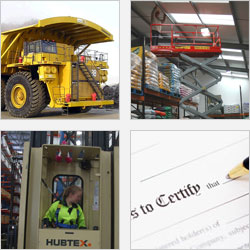The following video and transcript by Markus Leone explains the distinction between Verification of Competency and Recognition of Prior Learning and how the two are related.
Recognition of Prior Learning is a method that helps people obtain a qualification without formally having to attend a course.
Now what I mean by that is – and I will give an example of myself: Back in my military days I was involved in the roping industry, doing rope access and whatnot, doing man management and team-building training within the Military, and it was military-trained.
At the time, the military qualification was not recognised outside of the Military. When I retired I went to the appropriate TAFE, presented my military qualifications, presented letters from the Military; letters of… references and recommendations from the different parts of the Military that I did this training with, who gave me, you know, little thank-you letters; and videoed the things I was doing.
The TAFE itself took into account that I had the skill and the qualification. They viewed my evidence, and then I had to actually demonstrate, on two or three occasions, the same thing with different types of industry people, right from inspecting the equipment, making sure it was okay, right through to setting up the actual course, briefing the people, educating them on how to put the gear on – then actually doing it.
So the Recognition of Prior Learning does involve assessments. Besides the evidence that I presented, I was assessed on more than one occasion; I had some homework to do as well, to prove my worth. And when it was all over and done with, I was awarded a diploma out of a package, due to all the skills and knowledge I had with my military skills – which made me very happy at the time.
So this can be transferred to any type of industry. I will give an example: Someone operates a front end loader in a timber mill. The on-site rules don’t require them to have any formal ticketing. The individual has been operating the machine for, say, five/ten years. They then leave the timber mill industry and get a job somewhere else.
The next place they go to might want them to have some form of written qualification, say, to drive the front end loader. So, if that person was to come to me, they can show me how many years they have been operating it, they can give me letters of reference from their previous employer. I can then view them actually operating the machine, give them an assessment, both theory and practical. If they pass all that, then they will be awarded a qualification.
So therefore they don’t have to attend any formal training; they can just be awarded the qualification by assessments and evidence presented.
Now, Verification of Competency: That is a thing that has come into the industry over the last five to eight years. The majority of the mine sites and the bigger companies, when they employ people or have pre-employment contract arrangements with job placement agencies, what they want is staff to operate their machinery – but they don’t want just anyone operating without the confirmed knowledge that these guy can actually do.
So I have been in situations where I have had to assess people operating a piece of machinery, regardless of the fact of whether they were licensed to operate it; they still had to prove that they could. So I validated their theory as well as their practical – or just their practical, depending on what the site wanted.
For more information on assessing
Verification of Competency
contact Markus Leone at
[ www.safeliftconsultancy.com.au/contact/ ]
